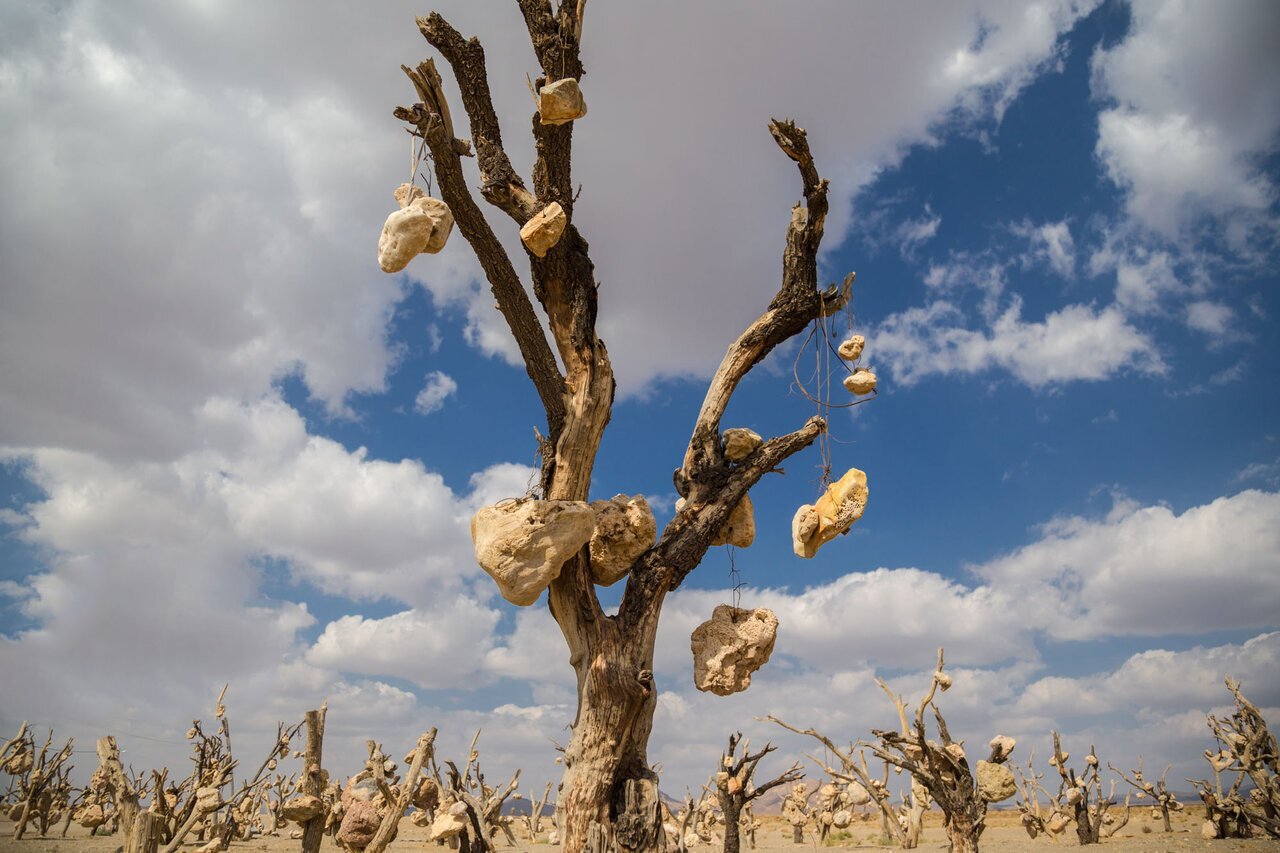Discover mesmerizing tale behind stone-adorned trees!

TEHRAN - If you find yourself venturing into the deserts of Kerman, southern Iran, don’t miss the opportunity to take a 30-mile detour to witness the extraordinary Bagh-e Sangi (“The Garden of Stones”).
Situated just east of the town of Sirjan, this remarkable site appears otherworldly at first glance. Tall, dry trees dot the landscape, each adorned with stones, hanging gracefully from their branches. It's a manmade haven for those seeking the unusual, and its visual impact is nothing short of incredible.
What makes this garden even more fascinating is the compelling narrative woven into its creation. Crafted by Darvish Khan Esfandiyarpour, a hearing-impaired landowner, the garden took shape starting in 1961. He meticulously suspended each stone from thick wires and large ropes on the withering limbs of the trees.
In January 1963, Mohammad Reza Shah initiated a series of far-reaching reforms recognized as the White Revolution. Following the implementation of land reforms, Darvish Khan, alongside other prominent landowners, experienced a substantial loss of his extensive holdings. It is recounted that his remaining lands were severed from access to the paramount resource in Iran's arid climate: water.
This way, Darvish Khan’s silent protest served as a response to the land reform plan. Over the years, the garden acquired additional layers of meaning, with a new tree symbolizing significant events in the man's life.
Darvish Khan passed away in 2007 at the age of 90 and found his final resting place within his rocky creation. Though he may no longer be present to narrate the story behind the symbolic stones, the spectacle remains a worthwhile journey.
As mentioned by Visit Iran, Darvish Khan devoted his entire life to building this unique garden. Each stone hanging from the trees and the creation of every tree held a distinct significance for him throughout the years. For instance, a curved stone resembling a shaved head was hung on a tree when his grandson joined the military, while another tree was adorned based on his evolving thoughts during special days.
Darvish Khan's life and his Garden of Stones became the subject of films by Parviz Kimiavi, an Iranian film director, screenwriter, and editor. Darvish Khan's body was laid to rest in his Garden of Stones, marking the culmination of a life dedicated to this mesmerizing creation.
Who was Darvish Khan?
Darvish Khan Esfandiarpour, better known as Darvish Khan, was born in January 1925 in Miandoab village, Kerman. It is believed that his grandfather was among the powerful rulers of the era, so Darvish’s family, enjoy the title ‘Khan’ after their names. Darvish Khan was one of the major landowners of Sirjan while also making a living through raising sheep and gardening, mainly almonds.
Due to congenital disorders, he was not able to hear or speak but this didn’t stop him from trying. There are some myths about him. Locals say he once combated with two leopards and killed them for hunting one of his sheep. Others say he used to entertain himself by playing with wolves and dangerous snakes.
AFM
Leave a Comment